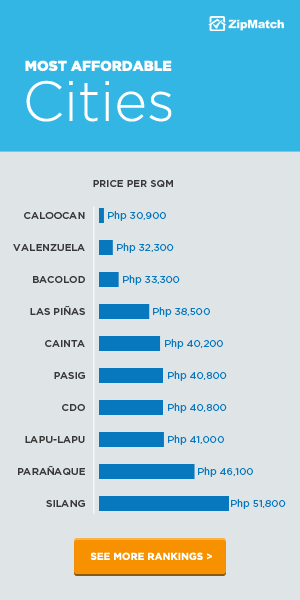Say you’re a real estate broker. In order for you to get many clients and inquiries, you decided to jump onto the online bandwagon. You paid handsomely for a website to publish all your listings online. You waited days, then weeks, and nothing happened. You figure, maybe you should do your business the old-fashioned way; that is, calling prospective clients, banking on your sales savvy—and not on some high-tech online solution—to get them to buy a property from you.
Or perhaps you’re not making the most of your online presence. You indiscriminately post listings online without much thought on how users navigate websites.
Given the extent which the Internet guides our everyday decisions, it can be argued that the second scenario is more likely. Why, you may ask. This is because the majority of home buyers now are more tech-savvy. In fact, statistics from the U.S.-based National Association of Realtors show that a staggering 90 percent of home buyers source their information online. This only shows how powerful the Internet is, but only if utilized properly.
Fortunately there are a few simple steps you can follow to make the most of your online presence, and in the process convert your marketing strategy into actual sales.
1. Get an Eye-grabbing Main Photo
According to a study published on the Journal of Real Estate Research (JRER), 95 percent of real-estate-website users look at a listing’s main photo—the one that features a property’s exterior—for 20 seconds. If the photo is not eye catching enough, the battle is lost before it even begins.
Your main photo must therefore be good enough for prospective buyers to get hooked into your listing for as long as possible. How can this be done, though? Get a professional photographer to take the photo (and all others, for that matter). These people know which angles emphasize the property’s best points and hide its not-so-flattering features.
Preferably an exterior shot (or a shot of the entire building in case of a condominium unit), try to schedule the shoot during the magic hour; that is, the first or last hour of sunlight during the day. This is when a specific photographic effect is achieved due to the quality of light, which results in a better and more inviting photograph.
2. Include the Property’s Complete Information
According to the JRER study, after looking at the main photo, 76 percent of web users viewed the property description—things like the size and number of bedrooms/bathrooms—second. Hence, this section should be as complete as possible.
Publishing a complete listing has two benefits. First, it gives potential buyers all the necessary information they need before making a decision to contact the agent, and if they do so, that means they are serious in making a home purchase, thus, eliminating the need for you weed out unqualified leads.
How can this be done? Start with the number of bedrooms and bathrooms, how large the living room and kitchen are, whether the property’s furnished or not, and other notable features like patios, yards, balcony, etc.
In addition, do not overwhelm users with information on brands and types of fittings used and hyped-up adjectives describing the property—just enough details to whet their interest that will make them want to see the property first hand.
3. Avoid “Real Estate Speak”
There’s literally an ocean of information available in the Internet, and users already have a hard time sorting out what’s useful from what’s not. Don’t make their job extra difficult by using words and phrases unfamiliar to them.
A sample description pulled from the MLS in the United States some years ago read as this: “4/3 MIL 2450 SF. 3CEG. PVT IG SP w/WF.” When translated, it means: “4-bedroom, 3-bath mother-in-law plan. 2,450 square feet. 3-car extended garage. Private in-ground Pebble Tech swimming pool, with water feature.” Now even a seasoned real estate agent will have a difficult time deciphering that.
4. Create an Interesting Slideshow
Often real-estate websites allow for a series of photographs to be included in the listing. If yours does, make sure to take maximum advantage of it. After piquing users’ attention with your eye-grabbing main photo, they would most likely want to see more. Try to arrange the photos in a manner as though you’re walking your would-be clients through the home itself, starting with the main entrance, the foyer (if there’s one), the living room, the kitchen, and the master bedroom and bathroom.
5. Write a Short but Interesting Agent’s Remarks
This is the space left for agents for their remarks about the property. Although this section is most often overlooked (41.5 percent of home buyers didn’t view this at all, according to the JRER study), this doesn’t mean that you should neglect this, as it also means that about 58.5 percent of users do view the descriptive text. Hence, if the agent’s remarks are more useful and compelling, more people would pay attention.
One way to maximize this section is to write something interesting, and when we say interesting it shouldn’t be off-putting. Prospective buyers tend to get turned off by exaggerated phrases, all-cap text, and too-technical descriptions. Do not repeat details already mentioned in the property information section. Also, some agents get too “creative” that they tend to fill their property descriptions with fluff and little substance. Instead, use this section to tell something about the home and neighborhood that isn’t readily available from the photos and data.
Much has been said about the Internet being a useful tool in real-estate marketing. Brokers go to great lengths to get their listings marketed online to reach potential homebuyers who, in turn, increasingly rely on the Internet for their next property purchase.
However, not all property-listing websites are created equal, and some agents are savvier than others. There are those who are satisfied with run-of-the-mill design that does not efficiently convert clicks into actual sales. Then there are those designed by savvy brokers who certainly know how users navigate websites, the lot who understand that first impression matters most in real-estate listings.










